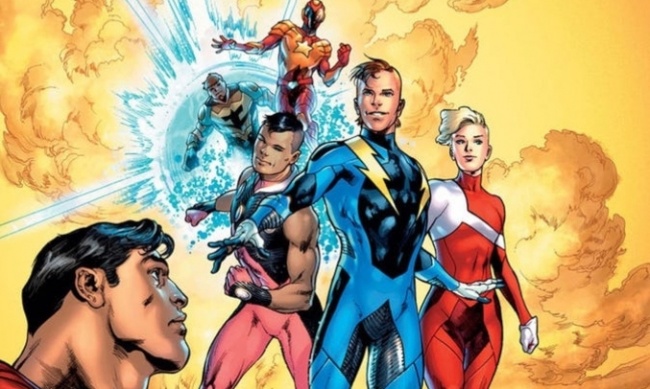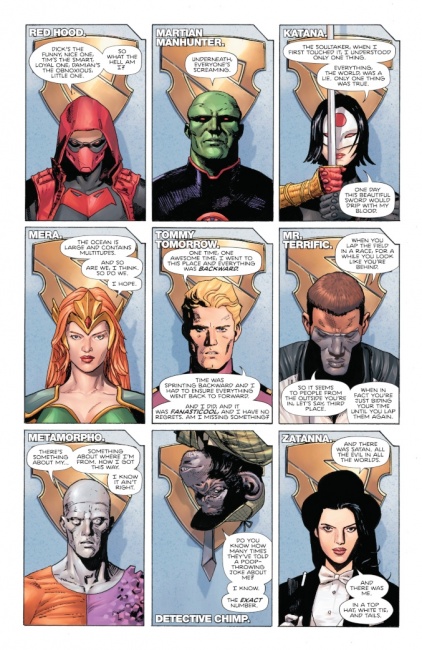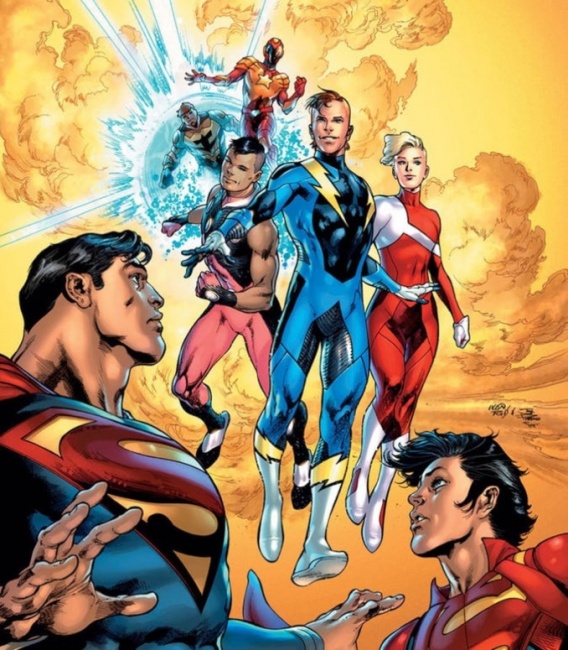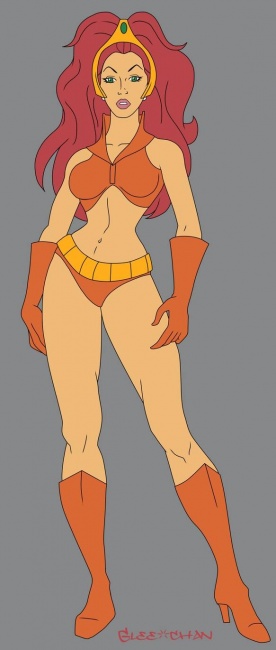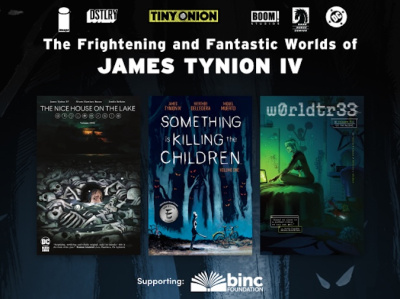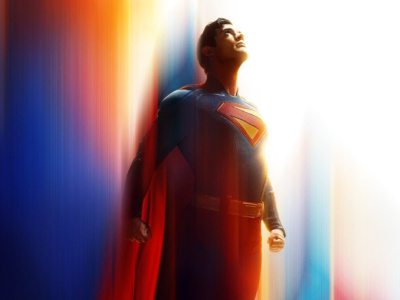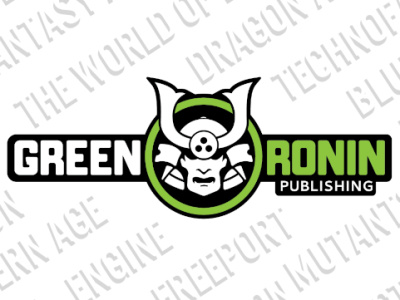Confessions of a Comic Book Guy is a weekly column by Steve Bennett of Super-Fly Comics and Games in Yellow Springs, Ohio. This week, Bennett looks at views of the future in comics, and introduces us to hopepunk.
Ordinarily, this would probably only interest old guys such as myself, but it’s hard to believe this isn’t somehow connected to Tommy’s upcoming appearance in Legion of Super-Heroes: Millennium #1 this September (see “Bendis Looks To The Future In 'Legion of Super-Heroes: Millennium'”). I’ve been a lifelong Legion fan, but I have to confess I became one for purely economic reasons; back when I was a kid what used to be called “pocket money” was in short supply so comic books about superhero teams seemed a better investment, numerically speaking, than those focusing on individual characters. Superman and Amazing Spider-Man were great superheroes but because there were more of them you got more for your money in Uncanny X-Men and Justice League. But when it came to sheer numbers the Legion of Super-Heroes had them all beat.
As a lifelong Legion fan, I’m, of course, looking forward to reading Bendis’ take on the franchise. No one has been able to create a sustainable Legion title for a couple of decades now, so far anyway. But given Bendis’ impressive track record when it comes to teen heroes, and artist Ryan Sooks’ solid new character designs, the success of Legion of Super-Heroes: Millennium seems a pretty safe bet. You could argue neither DC nor the direct sales market actively needs yet another super teen team (see “Confession Of A Comic Book Guy - Super Teen Team Explosion”). But given the success of DC’s middle-grade and young adult graphic novels, with the proper promotional push from DC Legion could give them another solid seller, in and outside comic shops.
And while it may be only wishful thinking on my part, I'm hoping the reinstatement of more hopeful futures (Omac, Tommy Tomorrow, The Legion of Super-Heroes) into the DC timeline means a moratorium on twisted tomorrows. Traditionally DC Comics has always had what apparently is now known as an "optimism bias," an unyielding, unrealistic belief in a better tomorrow, idealism which has been systemically pounded out of it over the last forty years or so, But it seems as if popular culture's unshakable belief we're heading for an inevitable dystopia seems to be on the wane, if you can believe pieces like Hopepunk, the latest storytelling trend, is all about weaponized optimism. I certainly hope so, because if you’re going to sell comics about the future to kids and teens, you should at least offer them the possibility that they have one.
Recently I wrote about the Defenders of the Earth (see "Confessions Of A Comic Book Guy - The Ghost Who Walks Kept On Walking"), the 80s animated series that featured the comic strip hero super team of The Phantom, Mandrake the Magician and Flash Gordon. Well, the characters seem to be in the zeitgeist because it was just announced that Taika Waititi To “Crack” ‘Flash Gordon’ As Fox/Disney Animated Film. As it points out, a Flash Gordon movie "has been in development for what seems like ages," but as to why the word “crack” in the headline is in quotes, I’ll have to back up a bit.
Flash Gordon was an incredibly influential comic strip by Alex Raymond about regular Earth guy Flash who along with Dale Arden gets taken to the planet Mongo via Dr. Zarkov's rocket ship. It's on a collision course with Earth and is ruled by (as you might imagine by the name) evil Ming the Merciless, and suffice it to say, sci-fi shenanigans ensue. It’s been endlessly updated and revamped, most famously in the intentionally campy 1980 movie with the soundtrack by Queen. But there was also a 1979 Filmation animated series, The New Adventures of Flash Gordon*, as well as one from 1996, an animated series where most of the cast were turned into teens. Plus a 2017 Syfy live-action series which had Flash living with his Mom and commuting to Mongo (which was clearly Canada) via dimensional rift.
“Crack” is in quotes because none of those revamps were successful, giving you some idea just how difficult it's been to update the deliriously (and, depending on your tastes, deliciously) old-fashioned source material for modern audiences. Plus there’s the added challenge of trying to do it in animation, when so far audiences haven’t been all that keen on seeing animated action on the big screen. But if anyone can pull this off, it’s undoubtedly the director of the Guardians of the Galaxy films.
* One of the problems with updating Flash is that early on he's offered the opportunity to get to know Ming's daughter, the admittedly cruel but incredibly sexy Princess Aura, a whole lot better. And he turns her down, presumably because he's a good guy and supposedly in love with Dale, who he's known for like fifteen minutes. It's hard to imagine a modern audience willing to accept that. As to how sexy Aura was, this is how she looked in The New Adventures of Flash Gordon. I've always wondered how the hell they got away with doing that on Saturday Morning network television back then.
The opinions expressed in this column are solely those of the writer, and do not necessarily reflect the views of the editorial staff of ICv2.com.



